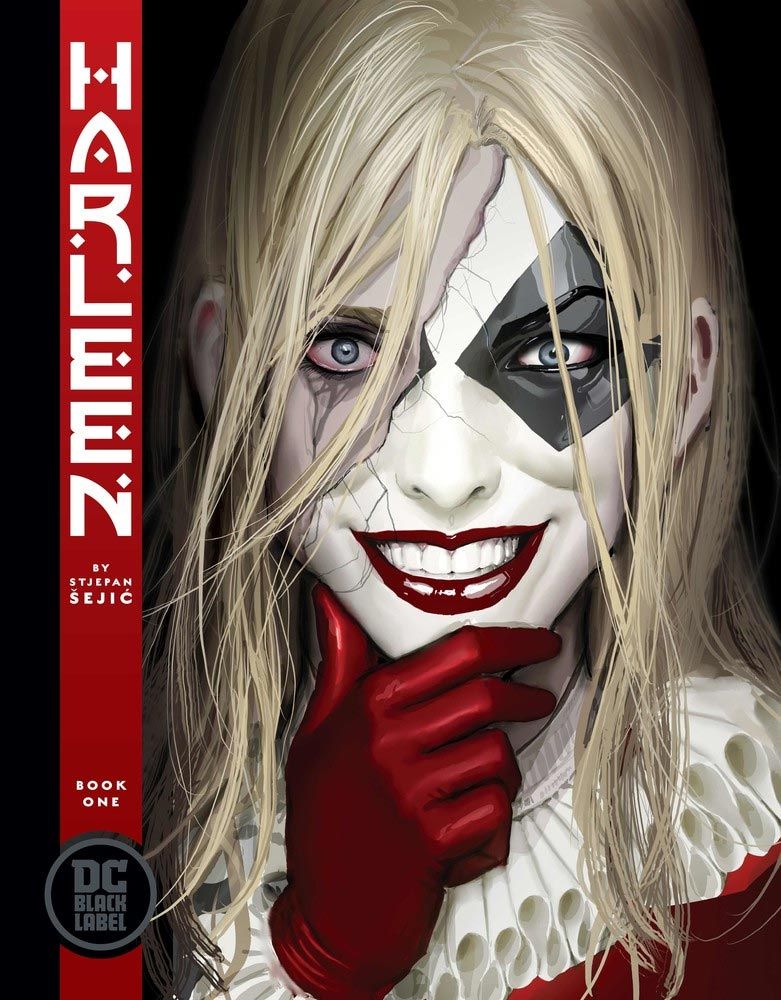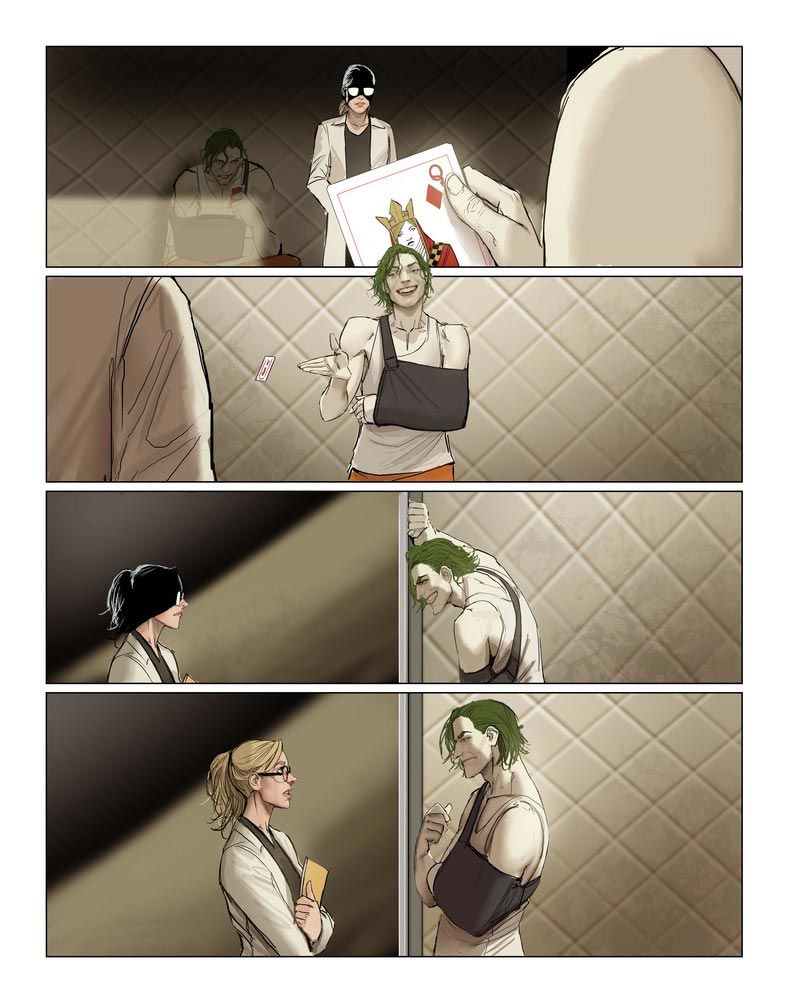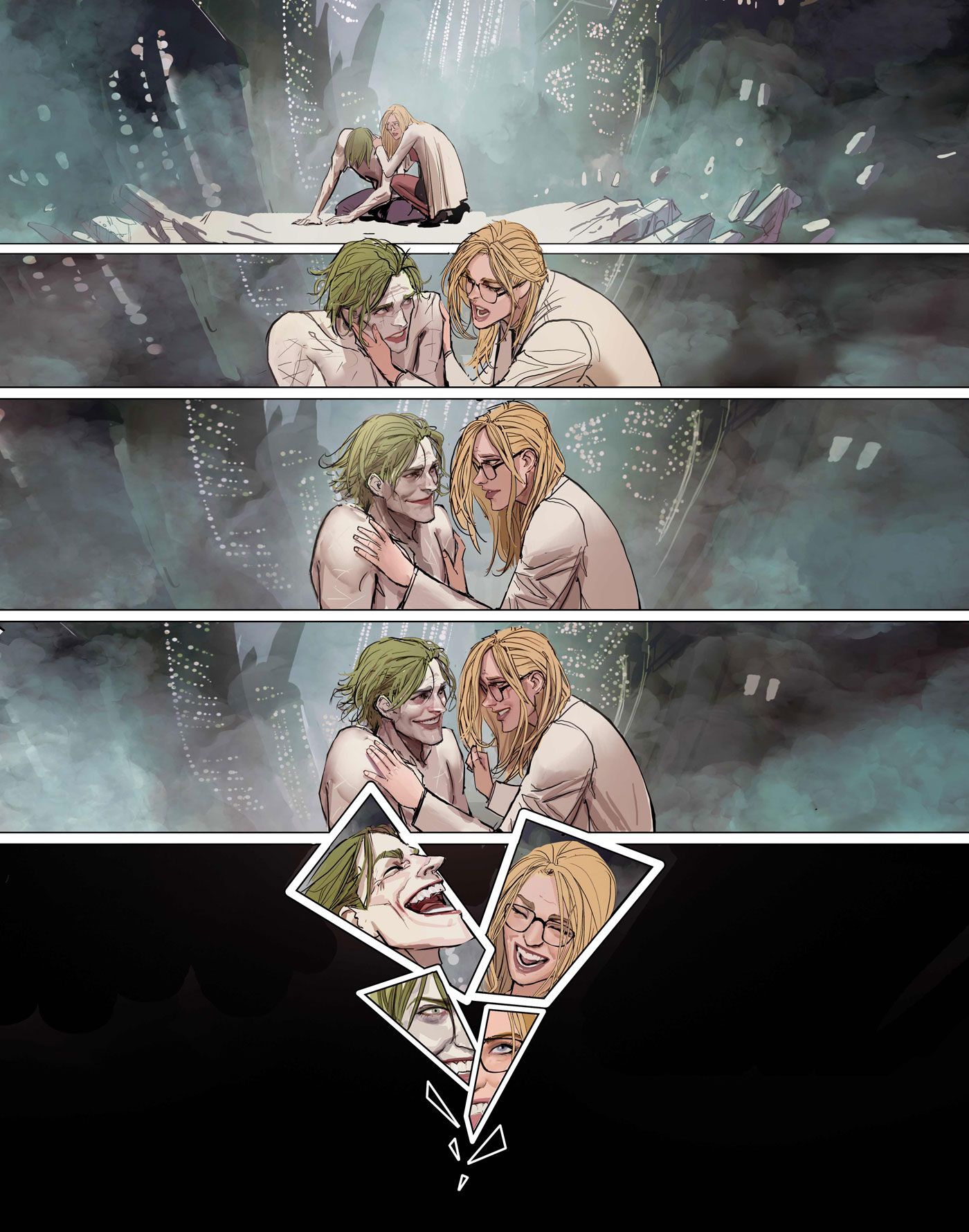With a new film starring the character out next February and new comic book titles putting the character front and center, now is a very good time to be a Harley Quinn fan.
Among the wave of new comic stories starring the longtime antihero is Harleen, the latest miniseries as part of DC Comics' mature reader publishing imprint DC Black Label, reimagining the origins of Doctor Harleen Quinzel and her descent into villainy and madness through her association with the Joker as a haunting, psychological tragedy in the heart of Gotham City.
With bestselling comic book creator, Stjepan Šejić writing and illustrating the miniseries, the story portrays, as he puts it, a bad romance doomed to succeed as heartbreakingly tragic as a good one doomed to fail. In an exclusive interview with CBR, Šejić explains what he seeks to do with the new miniseries, his plans for a potential sequel, and shares his perspective on one of the most infamous romances in the DC Universe.

CBR: How did this project for DC Black Label all come about?
Stjepan Šejić: Initially, it started as most of my projects start: with a bunch of character explorations and sketches kind of grasping the idea of the character. Through that, the concept was born and through that concept this story was born with an outline of Harleen Quinzel as sort of a life story; a Greek tragedy in three acts, pretty much. Once I had that figured out, I wrote a basic pitch idea and I asked my editor at the time, Andy Khouri, what was my process for pitching books to DC and he helped me figure out how to do the pitch and, at the final stage of it all, I decided to do the last seven pages of the first issue as a fully sketched out and lettered sample for DC editorial to take a look at. Once they saw that, they pretty much okayed it on the spot.
Something I've noticed across a lot of your work in Sunstone and Witchblade and here in Harleen is that you focus a lot on romance, especially complicated romance. What is it about that theme that you find interesting?
Complicated romance is interesting to write about. Romance, in general, is an opportunity to depict humanity at its most vulnerable emotional state and the more complicated the romance, the more intense response you can get from your characters; the more intense a story you can write. There's a beauty in writing a romance that's doomed to succeed and there is a different kind of beauty in writing a romance that's doomed to fail.
That's one of the big things in Harleen, you know it's one of those romances that can't work in the end, you know it doesn't work in the work. However, as a writer, you're facing the challenge of convincing the audience through the eyes of the character why they thought it might, why they thought it might succeed, why Harleen Quinzel thought she could help the Joker, why she could cure him, why she could save him.
And then, as a reader, you get to find out why it doesn't work.
To that point, who is Harley Quinn to you as a storyteller?
That's the great thing about this character created by Paul Dini and Bruce Timm: She is a lot of things to a lot of different storytellers. She is a clown, she is a villain, to others she's an antihero.
To me, the concept from the get-go is that she's a psychiatrist, a woman kind of trapped in her own mind who can comprehend her own psychosis, who can understand the severity of her own actions over time, and yet she finds new ways to justify herself, to justify her own actions, because the relationship she's in is effectively a defective one. Like any addict, they keep finding excuses to do the things they want to do. That's the core of the character for me, that's the thing that fascinates me from the get-go. She's a smart person doing a dumb thing and that is essentially human.
You've packed this first issue with tons of Easter eggs and references. What was the character you wanted to include the most?
For me, it's definitively Harvey Dent. In the first draft of Harleen, Harvey was just supposed to be one of the patients at Arkham. But through interactions with my editor, Andy suggested maybe Harvey should be in a more prominent position of him still being the district attorney. Originally there was supposed to be someone who had replaced Harvey Dent because of the nature of his illness and her research posed a threat to the prosecution of many cases. But once Harvey Dent got involved, it elevated the story to a whole new level because Harvey is the perfect parallel to Harley in the first story arc of Harleen and the payoff to that is going to be truly amazing.

What do you think is the big thing that sets your Harley apart from classic interpretations?
What I'm going with is an intense thriller mixed with a dark romance. The way I conceived it was kind of like The Godfather. In those movies, Michael Corleone doesn't initially want to be part of his family business, his whole idea is that [he's] not like that. But then, the shooting of his father and his love for his family pulls him into it. But once you cross that line, there's no going back.
That's kind of the concept with Harleen: She is a person with good intentions, with this idea that she wants to help the patients at Arkham, she wants to help humanity. She has this grand idea and great intentions but, in this case, the old saying is that the road to hell is paved with good intentions and the more she tries to help, the more she buries herself in this whole situation. After that, it's a road with no going back.
With this, you've presented this whole vision of Gotham as Harley tries to improve things. How do you want to present the Dark Knight?
He, from her standpoint, is part of the madness that represents Gotham. Gotham is presented from several different viewpoints. You see it from Harvey Dent's view who sees it as beautiful but flawed; he wants to save the city. From her standpoint, it is a city that is a war zone and a city that needs help. From her standpoint, Batman is a part of this war zone, part of this cycle of insanity. Gotham itself in the story is partially a character. This is why, at a certain point, Arkham Asylum is such a uniquely Gotham kind of thing. You don't have that in Metropolis, you don't have that in Star City, you don't have that in any of these other kinds of locations; it's a Gotham thing. It comes with the question does the city itself affect people in some way -- not in any paranormal kind of way -- but Gotham is just like that.
RELATED: Harley Quinn Is Pregnant With Joker's Baby (Seriously)
You start the story off with a very surreal dream. Will we see more of a surreal, psychological take as Harley descends deeper with her actions?
Oh yes, but it's going to be far more hard-hitting over time. Initially, the concept for the story is three story arcs consisting of three issues. Now, depending on the sales, we get to continue the story. But the way this develops for the [initial] run, we get to fully explore that concept and it gets even worse past that point later on. I've laid out the plans and one of the big things is that there's a whole thing where Harley herself goes into a vat of chemicals that caused Joker's skin to be bleached but what it also does in my story is that it severs his nerve endings. He pretty much can barely feel touch, he can barely feel pain, and it is from Harley's standpoint so it's going to be like her walking in her own padded cell. It's going to completely separate her from reality and that's where it's going to get really intense.
The big question we're dancing around is how does the Joker figure into all of this? How do you see the Joker?
Joker is Joker, this is not a story about him, but he is charming at times, he is terrifying at other times. He is cold, he is murderous and yet while writing his relationship with her, you see him in the way she sees him. You see her interpreting his moves, his nudges, everything he does and she interprets it as hope whereas I, a more detached person, see it as it is and it's going to be a very intense take because the goal is to depict him through her eyes and to depict her justifications for his actions and that's going to be one of the more heartbreaking elements of the story.

You mentioned you structured this like a three-act tragedy. If Act I is introducing the players on the board, what are Act II and Act III?
Well, the way I pitched it to my editor as a sort of summary, I basically presented it as the first act is Silence of the Lambs, the second act is Bonnie & Clyde and the third act is Thelma & Louise -- minus the ending. Point is, it's a story about Harleen Quinzel becoming Harley Quinn, becoming a villain, doing bad things and making the wrong choices and dealing with the consequences of it all and, in the end, finding her own way to swim out of it. The goal is never to have the audience read about the character and say, "Oh, I relate to this character deeply," -- and some may, that's fine -- but my concept from the get-go is to keep the audience invested and I have some really good ways of doing that.
As an aside, we really did like the fight sequence set in the smokescreen.
Initially, that whole scene played out differently but as I started exploring the concepts I wanted to play through the story, playing it from her point of view and, from that point on, I understood Batman had to be as scary to her as the Joker.
Do you have anything else you want to tease about Harleen?
Harleen is part of a greater concept with the three-act structure of the three story arcs. I have very much planned out and intend to pitch side books that will be in full continuity, the most important one being a story about Pamela Isley. If the sales are there and people are interested, I am very much interested in exploring the future stories of Harley and Ivy and even beyond that.
Written and illustrated by Stjepan Šejić, Harleen #1 is on sale now.




